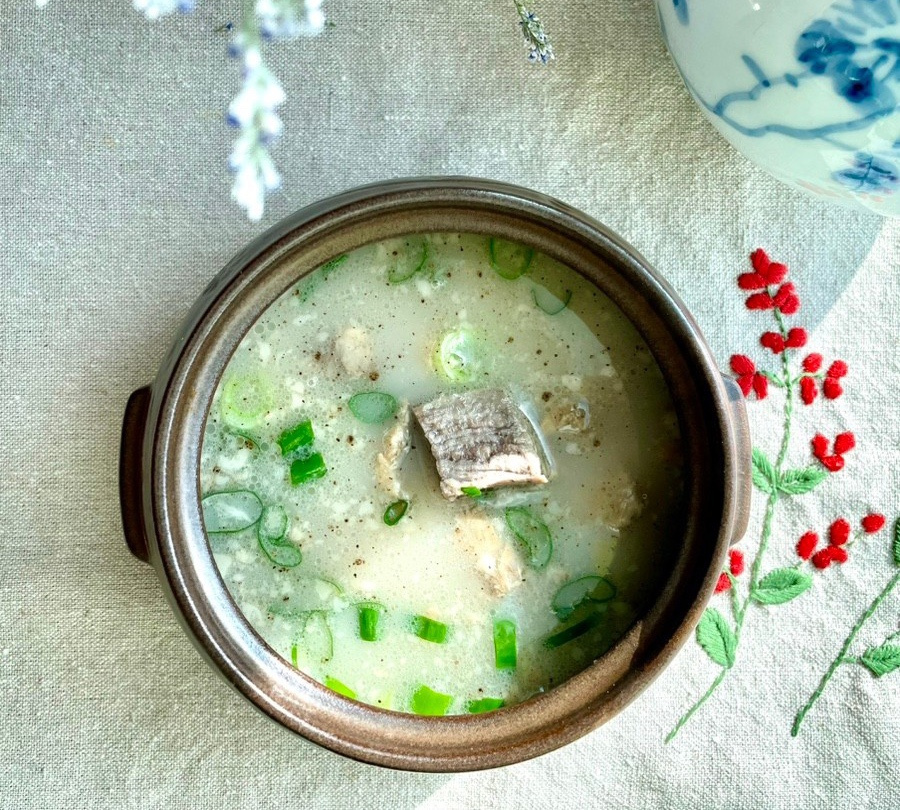Rich and Deep Korean Beef Bone Broth (Gomguk)
How to Make Authentic Korean Beef Bone Broth (Gomguk) with Marrow Bones for a Deep Flavor

Here’s a recipe for hearty Korean beef bone broth (Gomguk) that’s perfect for storing and enjoying later. I used affordable Korean marrow bones to create a deeply flavorful broth, just in time for making Tteokguk (rice cake soup). It reminds me of when my child, who didn’t know how to read yet, saw a juice box with a bear on it and called the taste ‘bear taste’! Just like that memory, I’ve made a Gomguk with a rich, simmered flavor. (Note: No actual bears are involved!). Adding sliced rice cakes to this deeply simmered broth makes a wonderful bowl of Tteokguk.
Gomguk Ingredients- 1kg Korean beef marrow bones
- 2L cold water (for initial blanching)
- 400g Korean beef stew meat
- Clear water (for adding)
- Pinch of salt (for seasoning)
- Pinch of black pepper (for seasoning)
- Chopped green onion (for garnish)
Cooking Instructions
Step 1
The first step is crucial for preparing the marrow bones cleanly. Submerge the 1kg of marrow bones in plenty of cold water to soak and remove blood. Soaking for at least half a day (4-6 hours), changing the water 3-4 times, will ensure a clean broth without gamey odors. After soaking, place the bones in boiling water and blanch for about 20 minutes. Ensure the bones are well covered with water. After blanching, discard the bones and the first water, which contains many impurities.

Step 2
After blanching, thoroughly wash the pot. Rinse the marrow bones again with cold water to remove any remaining impurities. Now, place the cleaned marrow bones in a pot for simmering the Gomguk and add plenty of fresh, clear water. Bring it to a boil over high heat, then reduce the heat to medium-high and simmer for another 20 minutes. Lightly rinse the 400g of Korean beef stew meat in cold water and add it to the pot as well.

Step 3
After simmering for a total of about 40 minutes, remove the beef stew meat from the pot. Set it aside on a plate and slice it into bite-sized pieces. If you simmer the meat with the bones for too long, it can become mushy and lose its delicious texture, so it’s best to remove it at the right time.

Step 4
Leave the pot of Gomguk in a cool place, such as a balcony, overnight. This will allow the fat to solidify into a layer on top of the broth. In winter, a balcony acts as an excellent natural refrigerator.

Step 5
The next morning, carefully skim off the solidified fat using a spoon or ladle. Removing as much fat as possible will result in a less greasy and more savory Gomguk. After skimming, return the pot to the heat and bring it to a boil once more.

Step 6
After boiling once, let the Gomguk cool completely. Then, skim off the solidified fat again, add a little more water, and repeat the simmering process about 2-3 times. With each repetition, the broth will become progressively whiter and richer, creating a truly ‘bear-like’ (deeply simmered) broth. Skim the fat and add water each time you re-boil until you achieve your desired consistency.

Step 7
Finally, ladle the finished Gomguk into bowls. Adjust the seasoning with salt and black pepper to your taste. Top generously with chopped green onions for a visually appealing and flavorful garnish. If you have leftover Gomguk, portion it into zip-top bags or airtight containers and freeze it. This way, you can easily take out and reheat servings whenever you desire a comforting and substantial meal.




